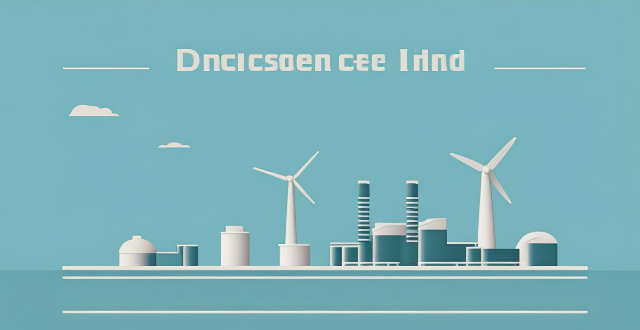The text discusses the efficiency comparison between renewable energy technologies and fossil fuels. Renewable sources, such as solar, wind, hydroelectric, geothermal, and biomass, have varying efficiency rates, with hydroelectric power being particularly efficient at up to 90%. Meanwhile, fossil fuels like coal, oil, and natural gas generally show higher efficiencies, especially natural gas plants which can exceed 60% efficiency. Despite their lower efficiencies, renewables offer significant advantages in sustainability and reduced environmental impact, making them increasingly competitive alternatives to fossil fuels.

Renewable Energy Technologies vs. Fossil Fuels
Renewable energy technologies and traditional fossil fuels differ in their efficiency, environmental impact, and sustainability. In this comparison, we will focus on the efficiency aspect of these two types of energy sources.
Efficiency Definition
Firstly, it's important to define what we mean by "efficiency" in this context. Efficiency can be thought of as the amount of useful energy produced relative to the total energy input. It is often measured as a percentage or ratio.
Renewable Energy Technologies
Renewable energy technologies include solar, wind, hydroelectric, geothermal, and biomass. Each technology has its own unique efficiency rates:
- Solar Power: The efficiency of solar panels ranges from 15% to 20%, meaning that for every unit of sunlight that hits the panel, only a fraction is converted into electricity. However, advancements in technology continue to improve these numbers.
- Wind Power: Wind turbines have an efficiency rate of around 45% to 50%. This means nearly half of the kinetic energy from the wind is converted into electricity.
- Hydroelectric Power: Hydroelectric power plants can have efficiencies up to 90%, making them one of the most efficient renewable sources. They convert the potential energy of water into electricity with minimal losses.
- Geothermal Power: Geothermal power plants have an efficiency rate between 10% and 20%, depending on the temperature of the geothermal source.
- Biomass: Biomass conversion efficiencies vary widely but typically range from 20% to 30%. The process involves burning organic matter or using it to produce fuels like ethanol.
Fossil Fuels
Fossil fuels such as coal, oil, and natural gas have long been used for electricity generation and transportation. Their efficiencies are generally higher than those of renewable sources when considered in isolation:
- Coal Power Plants: Modern coal power plants operate at about 33% to 37% efficiency.
- Oil Power Plants: Oil-fired power plants have similar efficiencies to coal plants, roughly around 35%.
- Natural Gas Power Plants: Natural gas power plants are among the most efficient, with modern combined cycle gas turbine (CCGT) plants achieving efficiencies over 60%.
Environmental Impact and Sustainability
While fossil fuels may appear more efficient in terms of energy output per unit of input, they come with significant environmental costs and are finite resources. Renewable energy sources, on the other hand, offer sustainable alternatives with much lower environmental impacts despite sometimes lower efficiencies.
Conclusion
In conclusion, while fossil fuels currently offer higher efficiencies in many cases, renewable energy technologies are rapidly improving and provide significant benefits in terms of sustainability and reduced environmental impact. As technology advances, we can expect renewable sources to become even more competitive with fossil fuels in terms of efficiency and cost-effectiveness.